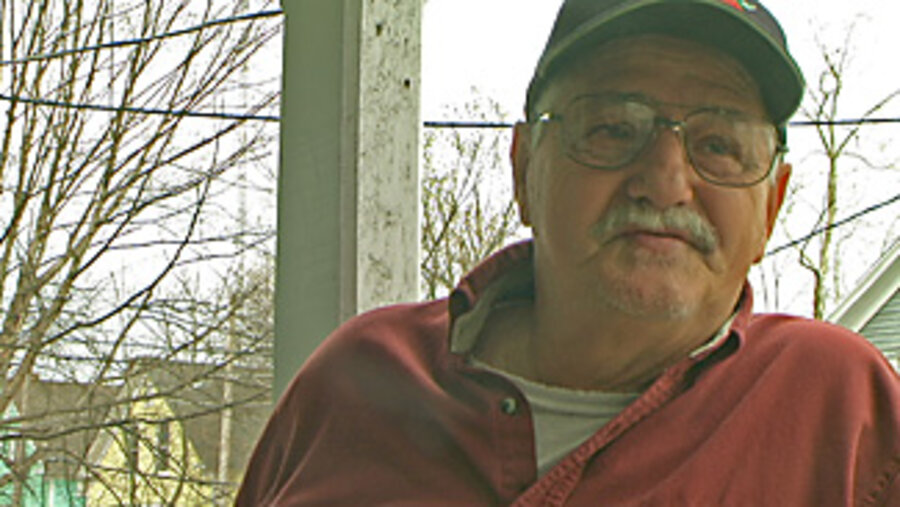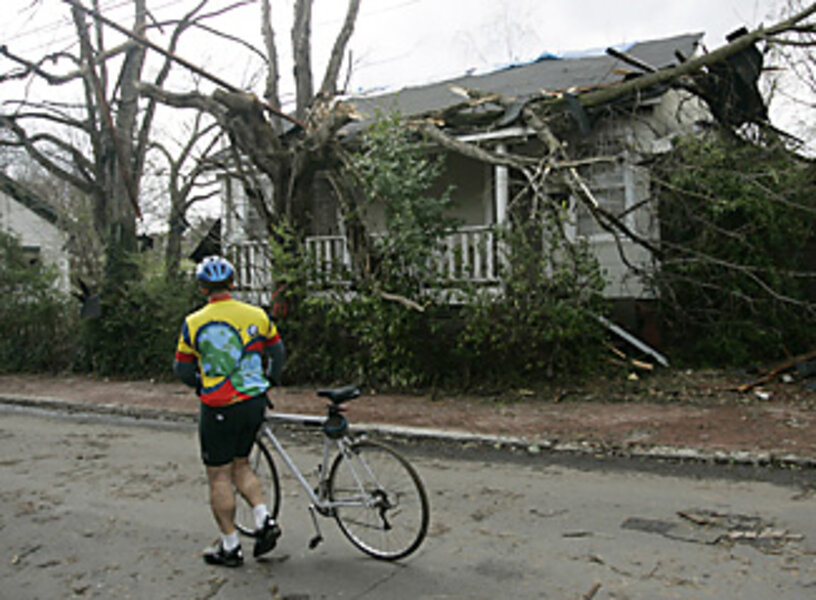In Atlanta's 'Cabbagetown' neighborhood, a storm brings peace
Loading...
Ronnie Edwards fired up his radio to listen to the Georgia-Kentucky game just about to start at the Georgia Dome. The game announcer started talking about debris flying around the press booth. Then Mr. Edwards heard the primal roar.
He flung himself to the floor. "I was on that floor talking to the good Lord when the tornado came over," recalls the retired grocery store manager. "I asked Him to have mercy – and 'Your will be done.' "
The March 14 tornado, the first to hit downtown Atlanta, caused one fatality, toppled Confederate grave markers, popped windows out of the iconic Westin Hotel, and created perhaps more than $150 million in damage.
But in the aftermath, Edwards and other longtime residents of the Atlanta neighborhood known as Cabbagetown found common ground with newcomers who have transformed the Appalachian enclave into a hip urban district.
"They're their own group, and sometimes they turn their noses up to us old-timers, but this storm showed a new side of them," says Edwards. "They were Johnny on the spot. They're good people."
Ziggy Salvador, a motorcycle-riding blacksmith with a spectacular fu manchu beard, is one of them. He moved to Cabbagetown two years ago, somewhat reluctantly. He spent last week commandeering crews to clear the streets of debris and patrolling the neighborhood.
Despite new construction and the mix of skate punks and young families who have largely replaced the Appalachians, Mr. Salvador says Cabbagetown is still defined by the urban hillbillies who settled around the Fulton Bag and Cotton Mill in the late 19th century.
Edwards says cabbage peddlers (hence, the name), tiny shotgun churches, and porch-sleeping defined the old Cabbagetown, alongside a fierce insularity. Segregated by language and custom, Cabbagetown flourished socially, if not economically. But when the mill closed in the early 1970s, drugs and crime roared into the vacuum. Original families moved out. Of 400 households in the neighborhood, only about 14 so-called "legacy families" remain, holding onto old manners, rock-hard faith, and a deep-down twang.
In the 1990s, however, urban pioneers discovered Cabbagetown, leading the kind of renaissance that has revitalized bric-a-brac neighborhoods across America.
"It's not unusual for those kinds of mill villages to achieve a kind of cachet for the next generation," says Edwin Arnold, a professor at Appalachian State University in Boone, N.C. "They often have a kind of artistic or counterculture feel to them."
Still, resentment flickered amid the densely built bungalows. Old-timers chided "yuppies" for bringing in expensive rules designed to preserve the look of the neighborhood. Newcomers ran up against sometimes grouchy original residents who didn't keep their houses up.
"I don't like people claiming to know more about Cabbagetown than the ones that was born and raised here," says Edwards, summing up the divide.
But the storm has changed all that – at least for now. Despite the buzz of chain saws and rumble of trucks, a kind of peace has settled over the tornado-struck burg.
"This reminds people of the old Cabbagetown," says Salvador. "The Cabbagetownies have been through thick and thin, but this tornado became a communal experience for the new Cabbagetown. It's brought everybody together."






